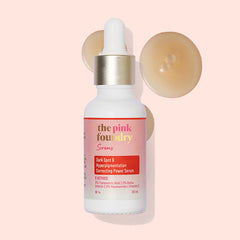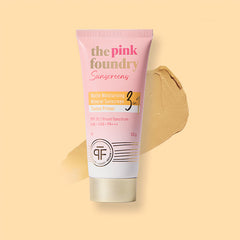What Is Salicylic Acid: How Does It Work And What Does It Do?
Introduction to Salicylic Acid
Salicylic acid ranks first on the list of essential substances when it comes to over-the-counter remedies for breakouts. But what is salicylic acid? To put it simply, it is one of acne’s worst nightmares. The moment a zit appears on your face, you grab for a spot treatment.
If you apply it over a pimple during the night, you can wake up with a dried-up, much less apparent acne. But what does salicylic acid do in skincare, and how can one effectively utilise it? Let’s find out.
What is Salicylic Acid?
Salicylic acid is one of the best beta-hydroxy acids (BHAs) for keratolytics. It encourages the skin’s normal exfoliating function. Salicylic acid is in what we call the ‘bark’ of some plants, like white willow and wintergreen leaves. However, now, it is mostly made in a laboratory.
By entering the skin and eliminating acne-causing germs, it treats pimples, often known as acne. In addition, it replenishes skin prone to acne, lowers oil production, and maintains open pores.
This chemical has traditionally been used to address various issues, such as clogged pores, psoriasis, and bumpy skin. This substance's gentle yet powerful exfoliating qualities can help leave your skin feeling smoother and softer when used as part of your skincare routine.
How Does Salicylic Acid Work?
Salicylic acid is an organic exfoliator. The stratum corneum, the skin’s outermost layer, is made of layers of dead skin that shield healthy skin cells beneath. The dead skin cells are constantly shed, replacing the new ones. The excessive accumulation of dead skin cells is the cause or effect of certain dermatological disorders.
When put topically to the skin, salicylic acid breaks down the desmosomes. These are structures that cause skin cells to adhere to one another. Skin cells shed due to these connecting structures disintegrating, exfoliating the skin’s outer layer. Salicylic acid finds its application in several topical skin care preparations, such as face washes, cleansers, and gels.
Benefits of Using Salicylic Acid
So, what is salicylic acid used for? What benefits does it hold for your skin? Let’s see.
- Acts as a Mild Astringent: Astringency is one of salicylic acid’s numerous additional skincare applications. This aids in the unclogging, reduction of oiliness, and tightening of skin pores by the beta-hydroxy acid. Salicylic acid serum tightens the skin and reduces the look of pores, leaving the face smoother and younger-looking.
- Stops Acne: Salicylic acid is a comedolytic, which means that it lessens blackheads and whiteheads on the skin. Additionally, it prevents the buildup of dead skin cells and excess sebum beneath the skin’s surface by gently unclogging the pores. Since salicylic acid dissolves the connections separating cells in the skin’s outer layers, it is a useful treatment for facial blemishes.
- Cuts Down on Extra Sebum: Oily skin slows the cycle of natural skin shedding and clogs pores. If left untreated, this locks the germs inside the cells, which could eventually worsen into an excruciating inflammation. Face wash helps release microorganisms and breaks down fatty components on the surface of greasy skin.
- Lightens Blemishes: Lastly, salicylic acid can brighten and lighten skin. It lessens the visibility of skin discolouration, blemishes, and dark patches. Since this acid has astringent qualities, it can also be used as part of a regular skincare routine to help balance skin tone and minimise discolouration.
Also read: Amazing Benefits of Salicylic Acid for your Skin
How to Incorporate Salicylic Acid into Your Skincare Routine
Since salicylic acid is an ingredient rather than a finished product, its application will vary depending on its form. Among them are:
- Face Wash: Use it once or twice a day, depending on how much your skin can take. Try Pink Foundry’s Clearing & Calming Acne Face Wash 100 ml, which comes with 1.5% salicylic acid to help you exfoliate and deeply cleanse the skin just the way you want.
- Serums: Once more, take note of any active ingredients you may have already included in your serum.
- Spot treatments: Using spot treatments with salicylic acid, like The Pink Foundry’s Overnight Acne Spot Corrector, is an effective doing away with pesky pimples and zits.
Precautions and Potential Side Effects
Only apply salicylic acid on your skin. Avoid putting it near your mouth, lips, eyes, eyelids, and the inside of your nose. Wash the affected area with water immediately if the medication comes in contact with any of these places.
Keep salicylic acid away from open wounds and skin that has been scraped or worn down. Your skin is likely susceptible to sunshine's damaging effects if you use salicylic acid. Hence, stay out of the sun as much as possible and limit your time in it. When using salicylic acid, you should wear protective clothes and apply sunscreen.
Alternative Options for Treating Skin Concerns
- Niacinamide: Niacinamide’s humectant qualities enable it to attract and retain water on the surface of the skin of the face. Niacinamide helps prevent the symptoms of dryness frequently linked to combining the two substances by ensuring the skin gets its fair share of water.
- Hyaluronic Acid: Hyaluronic acid helps skin cells receive substantial moisturisation. This works perfectly with the topical application of salicylic acid for the skin, which can occasionally cause skin cell sensitivity. One may use the two combined as a serum.
FAQs:
-
What are the effects of regular salicylic acid use?
While using salicylic acid regularly is harmless, you shouldn’t introduce it to your routine too soon. Proceed cautiously, as it may cause skin irritation and dehydration.
-
What advantages does salicylic acid mostly offer?
By removing dead cells from the skin's outermost layer and reducing redness and irritation, salicylic acid helps the skin and reduces the appearance of pimples.
-
Salicylic acid or niacinamide: which is superior?
While salicylic acid is known to exfoliate the skin, its ability to help with acne scar treatment is less well-established. Niacinamide is the best choice for those with scars, as it effectively lightens pigmentation and discolourations.











